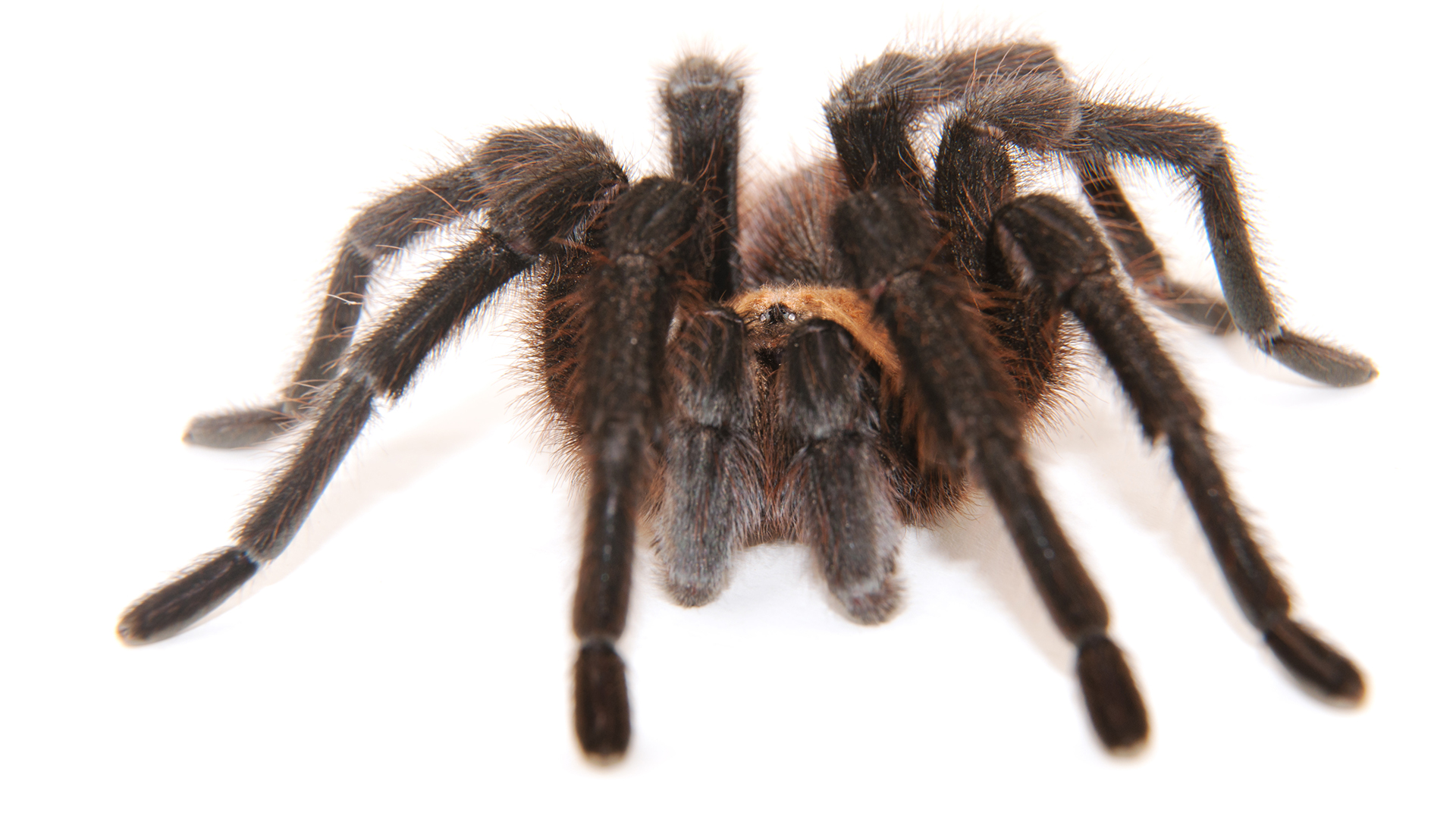Thousands of Tarantulas Are About to Set Off on Their Annual Migration in Colorado
Legs for days.

Southeastern Colorado will soon be experiencing the pitter-patter of little feet — tens of thousands of them — as thousands of male tarantulas begin their annual migration to the prairies to find a mate.
Beginning in late August, Oklahoma brown tarantulas (Aphonopelma hentzi, also known as Texas brown tarantulas) will begin their trek through the La Junta, Colorado, area, a journey to undisturbed grasslands that typically lasts through early October, according to a report by The Gazette, a newspaper that serves Colorado Springs.
Female tarantulas hunker down in their prairie burrows for most of their lives, but the males walk for up to 1 mile (2 kilometers) to find a mate, according to CNN. However, this epic migration will look more like a steady trickle of spiders than a dense carpet of hairy brown bodies, as the tarantulas aren't social and usually travel alone, Mario Padilla, head entomologist at the Butterfly Pavilion, a nonprofit invertebrate zoo in Westminster, Colorado, told CNN.
Related: Creepy, Crawly & Incredible: Photos of Spiders
Oklahoma brown tarantulas are fuzzy, brownish spiders; females' bodies measure 3 inches (7.6 centimeters) long and weigh about 0.7 ounces (20 grams), while males are somewhat smaller, according to the U.S. Fish and Wildlife Service (FWS).
The spiders produce venom to subdue their prey, though the toxins are not harmful to people. However, tarantulas' sharp fangs can pierce human skin, and bites can lead to bacterial infection. Tarantulas also defend themselves by brushing off stinging hairs on their abdomen, which can irritate a person’s skin, eyes and respiratory tract, FWS says.
Males typically embark on a female-finding trek when they reach sexual maturity at around 10 years old, CNN reported. And the spiders' first migration is also their last; while males may remain active through the fall, nearly all of them will be dead by November, according to a fact sheet posted on Colorado State University's Western Colorado Entomology (WCI) website.
Sign up for the Live Science daily newsletter now
Get the world’s most fascinating discoveries delivered straight to your inbox.
The spiders are most active at dusk in the hour before sunset, and tarantula enthusiasts hoping for a glimpse of the leggy travelers will find plenty of amorous arachnids on Highway 109 on the Comanche National Grassland, according to a recommendation by a La Junta tourism site.
- In Photos: Tarantulas Strut Their Stuff
- In Photos: Spiders Hatched from Web Towers
- In Photos: The Spectacular Migration of Monarch Butterflies
Originally published on Live Science.

Mindy Weisberger is an editor at Scholastic and a former Live Science channel editor and senior writer. She has reported on general science, covering climate change, paleontology, biology and space. Mindy studied film at Columbia University; prior to Live Science she produced, wrote and directed media for the American Museum of Natural History in New York City. Her videos about dinosaurs, astrophysics, biodiversity and evolution appear in museums and science centers worldwide, earning awards such as the CINE Golden Eagle and the Communicator Award of Excellence. Her writing has also appeared in Scientific American, The Washington Post and How It Works Magazine. Her book "Rise of the Zombie Bugs: The Surprising Science of Parasitic Mind Control" will be published in spring 2025 by Johns Hopkins University Press.









